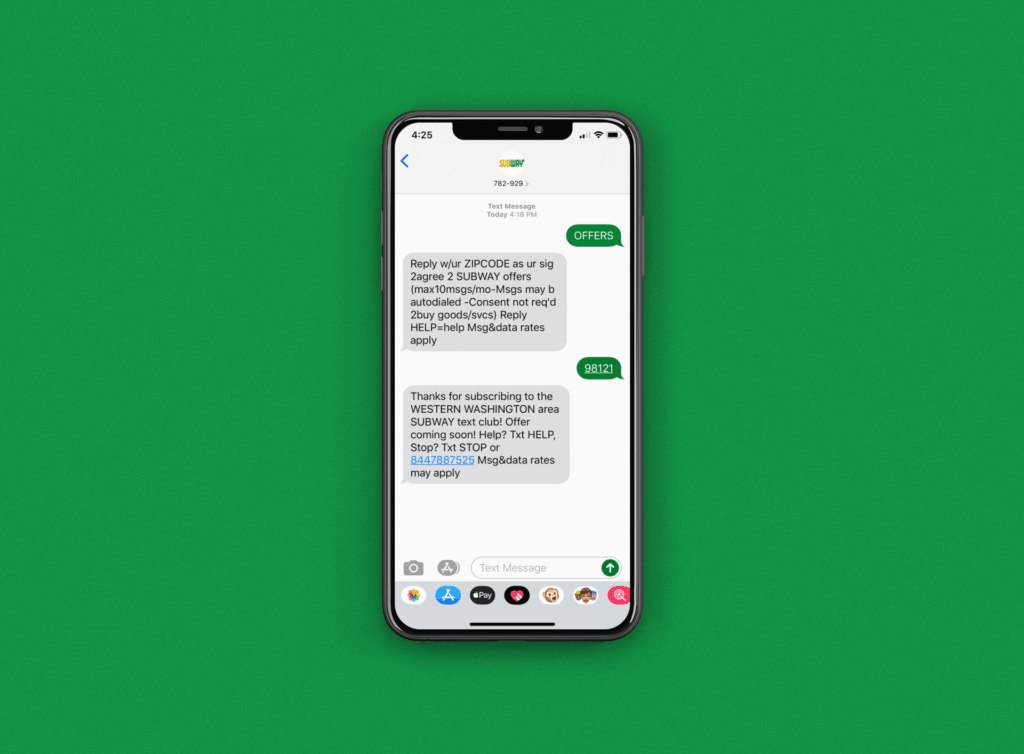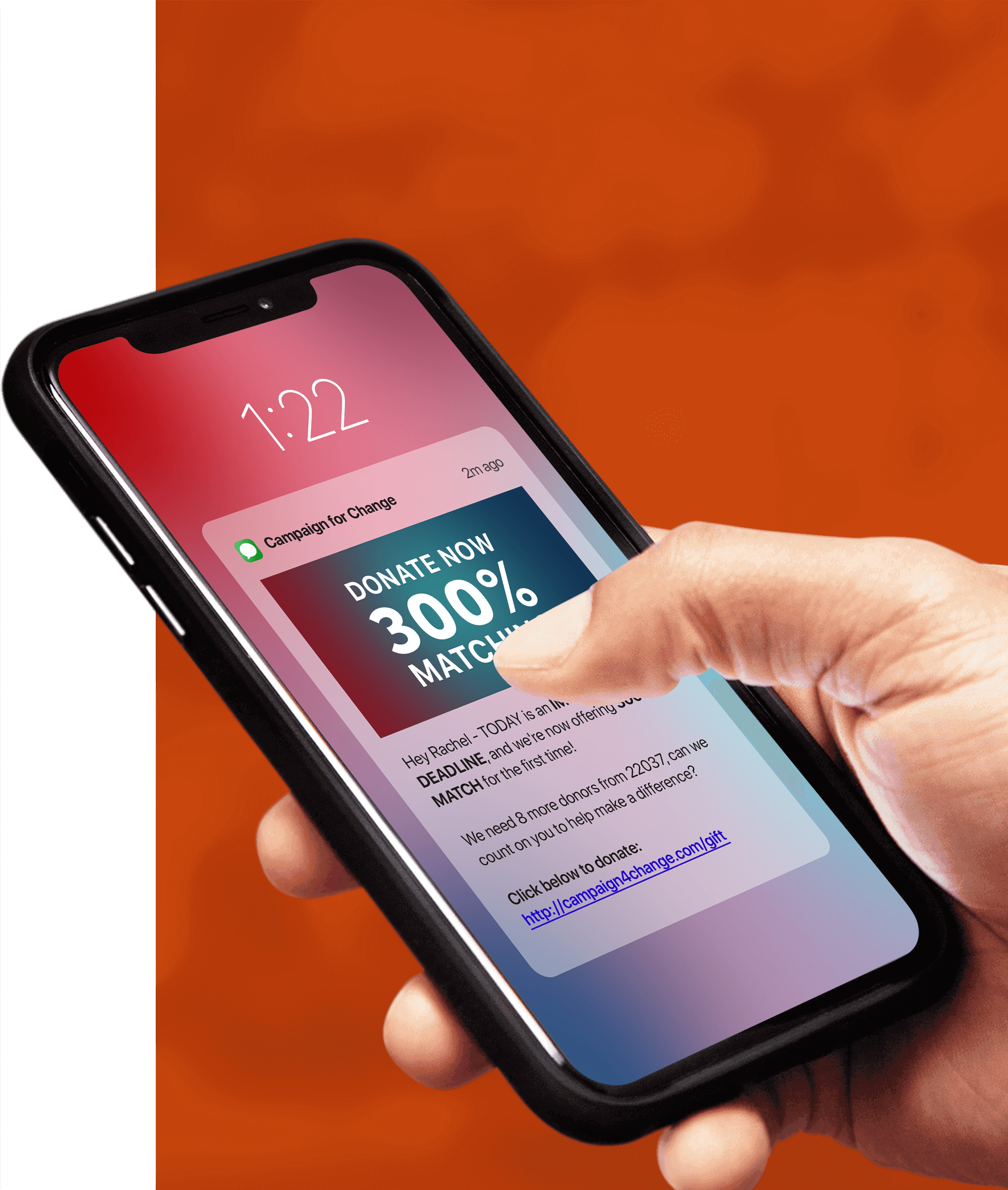14,491 Views
In the video above, Tatango CEO Derek Johnson answers the question, “What is SMS geofencing?” Prefer to read instead? No problem, please see the post below. You can also find answers to all of your SMS marketing questions in our Q&A video library; click here to browse.
What is Mobile Geofencing?
Mobile geofencing, sometimes called geotargeting, is a location-based service (LBS) that enables a brand to use the location data of an SMS subscriber. Mobile geofencing has existed for years, but as society has shifted to adopt mobile technology, developers and brands understand the value that mobile geofencing can add to their SMS marketing campaigns.
Geofencing refers to creating a virtual boundary around a predetermined area, most commonly enabling an app to trigger a response. In a mobile app situation, when customers give GPS permission to a mobile app, mobile app developers can track the phone via GPS.
For example, companies like Uber and Lyft use mobile GPS permissions to connect a driver to a passenger’s location. Starbucks also uses mobile app geofencing to know when a customer has walked into the proximity of a store.
Important Warning
That being said, it’s essential to understand that SMS geofencing does not permit a business to send out text messages to mobile phones in the area without consent. For example, if Pizza Hut wanted to message people within a 10-mile radius of their restaurant, Pizza Hut would be unable to message those people without first receiving consent, also known as an opt-in, from those customers to receive marketing messages.
What is SMS Geofencing?
Compared to geofencing for mobile apps, SMS geofencing is different.
The common misconception is that SMS providers can target someone within a 50-foot range of a store; while technically feasible, it’s financially impossible to execute. That’s because SMS doesn’t have GPS-enabled capabilities all the time. This means that to find a GPS location of a mobile phone user, an SMS provider has to conduct a location lookup, a process like this is very costly and challenging.
To illustrate the ineffectiveness of this process, let’s use an example. If an SMS program had one million subscribers, and a brand wanted to know whenever a subscriber walked into a geofence radius, how could this be executed? A brand would have to look up the location of all one million subscribers 24 hours a day, every single second. Obviously, this would be quite the undertaking.
How Does SMS Geofencing Work?
First, a brand has to receive permission (consent) from a mobile phone number to send marketing messages. This process involves a customer texting an SMS keyword to an SMS short code. After the opt-in process, the customer must give permission to share their location so the brand can be notified when the customer is in a geofence. Geofencing can target areas such as a retail store, a stadium, or even a neighborhood.
Below is an example of a customer giving permission to a brand to use their location for SMS geofencing.
Once a brand has received permission to text message the customer in the example above, they then receive permission to track that customer’s location and message them based on their location.
In most scenarios involving SMS geofencing, a brand will only need to look up the location of their SMS subscribers once a day, around a specific time, for a specific promotion. For example, Pizza Hut may only look up their subscribers’ locations twice a day, before lunch and dinner, if Pizza Hut is only interested in sending lunch or dinner promotions to subscribers in the area during those times.
Below is an example of an SMS marketing promotion sent by Pizza Hut using geofencing to target SMS subscribers within the area during lunch.

Example of an SMS Campaign Using Geofencing
Creating a geofence for an SMS campaign allows a brand to tailor SMS promotions to an SMS subscriber’s real-time location, increasing SMS marketing open rates and SMS redemption rates. For example, Tatango powered the technology behind a location-aware SMS marketing campaign for Easton Mall, in partnership with Alliance Data.
The location-aware SMS campaign ran from Black Friday to New Year’s Eve in 2012 and targeted cardholders of select branded credit programs. To target these cardholders, an SMS geofence was created around Easton Mall in Ohio and designed to trigger an SMS text promotion when subscribers were within the predetermined proximity of the mall.
The SMS promotion encouraged SMS subscribers to use their store-branded credit cards for a chance to win a shopping spree at one of the participating retailers. To illustrate the effectiveness of the campaign:
- 39% of SMS subscribers said that the location-based mobile marketing campaign influenced their purchase decisions.
- 37% of SMS subscribers said the SMS promotions influenced them to visit a specific brand within the mall.
- 68% of SMS subscribers indicated they would sign up for future location-based SMS promotions.
- Cardholders that received the location-aware mobile marketing messages spent on average 24% more in a shopping trip than the average cardholder that didn’t receive the location-aware SMS promotions.

Another Approach to SMS Geofencing
A successful approach to SMS geofencing involves collecting location data during the SMS opt-in process. For example, a brand could collect a subscriber’s zip code and use that data to send messages to a radius around that zip code. Subway uses this process, collecting subscribers’ zip codes to organize their subscriber base and tailor the most relevant, value-adding content.
Targeting potential customers based on their active GPS location isn’t feasible. However, collecting a subscriber’s zip code during the SMS opt-in process is a great way to gather valuable data brands can use to target locationally, while also receiving double opt-in consent.
Top 7 Most Commonly Asked SMS Geofencing Questions
While location-based SMS — also known as geofencing — has been around for years, they’re still a lot of questions regarding location-based mobile marketing and how location-based technologies can be used to improve SMS marketing campaigns.
Below are seven of the most commonly asked location-based mobile marketing questions, and their answers as they relate to SMS marketing.
1. How do you determine where SMS subscribers are located?
As stated earlier, a mobile geofence is a layer of intelligence that allows brands to take action based on a targeted geographical area. A geofence can target areas such as a retail store, a stadium, or even a neighborhood.
Tatango uses a Network-based Geofence, which uses carrier-grade location data to determine where SMS subscribers are located. In the example below, the SMS subscriber is 22 miles outside of the geofence that Starbucks set up for their Mountain View store location.

2. Once opted-in, is this technology always tracking SMS subscriber locations?
With network-based geofencing, it’s not required. The correct way to use SMS geofencing is to use the additional data points to send locally-targeted, relevant content. Highly targeted and relevant content increases SMS redemption rates and return on investment.
For example, using location-aware SMS marketing, restaurants might target the evening to send SMS promotions to increase traffic during happy hour and thus, don’t need to track subscriber’s locations outside of that time period.
3. How accurate is the SMS subscriber’s location?
Tatango advocates the use of network-based mobile marketing geofences that uses carrier-grade location data to pinpoint the location of an SMS subscriber.
Accuracy depends on several factors, including the type of location capabilities. For example, A-GPS location capabilities are incredibly accurate in outdoor environments compared to less accurate options like G-CID, Cell ID, and Enhanced Cell IDs. These capabilities produce a mobile geofence location accuracy ranging from one to five city blocks, or 100 to 5,000 meters.
Other considerations that affect location accuracy include wireless carrier network technology. This includes GSM, UMTS, CDMA, HSPA, LTE deployments, and the topography of the area, such as if the SMS subscriber is in a dense urban, suburban or rural area.
4. How big or small can the geofence around a business be?
The size of a geofence for an SMS campaign can vary. The size of the geofence depends on the SMS campaign requirements and the expected accuracy of the underlying location method that will be used i.e., A-GPS VS G-CID. A business can also create multiple SMS geofences, which is useful if they have multiple locations.
5. Can we create an SMS geofence based on a city, state, or zip code?
Yes. As an example, in online gambling, location data is a key requirement for any wage-taking gaming app or mobile lottery. Obtaining approvals from regulatory agencies and gaming testing labs requires a user’s physical location to be within a state or territory with legalized online gambling. GPS location can be easily spoofed, and wifi or geoIP are insufficient to provide validated location beyond country level. Network location accuracy, reach, and un-spoofability make it a requirement for authenticated, verified location compliance.
6. Does this technology work on all mobile phones, carriers, and all plans?
Using network-based Geofencing, brands can reach 100% of SMS subscribers regardless of mobile phone type, carrier, or plan. Tatango has the most expansive reach in the industry and can locate more than 400 million mobile phones across the U.S. and Canada through our unrivaled relationships with Tier 1 and Tier 2 wireless carriers. Adding location-based targeting to an SMS campaign doesn’t cost SMS subscribers additional money.
7. How much does it cost to add a geofence to an SMS campaign?
The cost of adding a network-based geofence to an existing SMS campaign depends on how often a brand wants to look up the location of their SMS subscribers. Depending on the results, it’s easy for brands to increase or decrease how often an SMS subscriber is located. This type of technology can be implemented on existing SMS campaigns with only a minimal amount of work.
Applying Geofencing to Your SMS Campaigns
Using SMS geofencing, brands can create SMS marketing campaigns that are more interactive and generate higher conversion rates from their SMS promotions. Have more questions about how to leverage location-based mobile marketing services to create SMS marketing campaigns that are more interactive and generate higher conversion rates? Call Tatango at (888) 517-6345 or send us a message, and we’d be happy to discuss the capabilities of this exciting technology.


